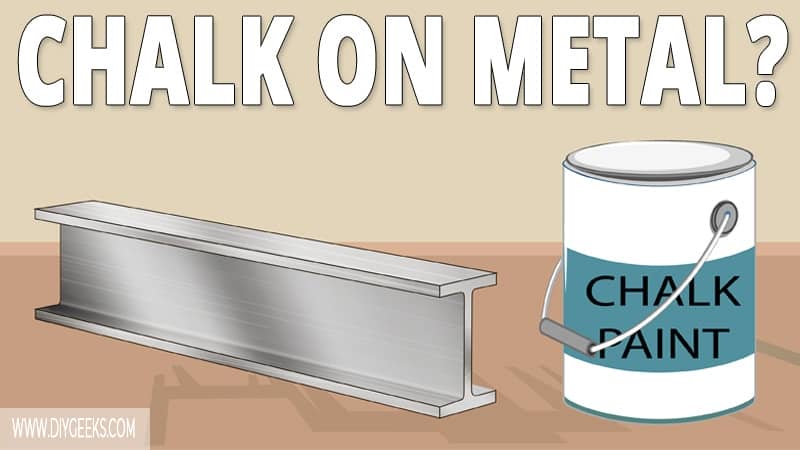Chalk paint is water-based and has good bonding qualities, while metal is non-porous.
To apply chalk paint over metal, clean the surface, remove any existing finishes, apply primer, and apply chalk paint.
Also, if the metal surface is painted or sealed, you must remove the previous finish first. That’s because a sealer will prevent paint from penetrating a surface.
Does Chalk Paint Adhere to Metal Surfaces?
Chalk paint does adhere to metal surfaces if it’s clean, unsealed, and has no imperfections. However, you must apply a stain-blocking primer to improve the adhesion.
If the metal surface is dirty, sealed, or riddled with imperfections, you must clean, sand, and repair it with metal filler.
Cleaning will remove the dirt, dust, and debris from the surface, sanding will remove imperfections, and metal filler will fix (or fill) holes in the surface.
Chalk paint must penetrate a surface to stick over it, but since metal is non-porous, the paint can’t penetrate it properly and won’t adhere.
To improve the adhesion between chalk paint and the metal surface, apply a stain-blocking primer. The stain-blocking primer will cover imperfections, produce a textured coating for the paint to stick to, and prevent moisture from affecting the finish.
Related Read: Will Chalk Paint Adhere To Glass?
How Long Does Chalk Paint Take to Dry on Metal?
Chalk paint takes around 30 minutes to dry enough for a re-coat and around 24 hours to cure (fully dry) on metal. The exact chalk paint dry time depends on the room humidity, temperature levels, and number of coats.
For paint to dry, the solvent (water) must evaporate and the coating must harden and adhere to the surface. Chalk paint uses water as its paint solvent, and water evaporates faster from coatings.
Since metal is non-porous, the paint solvent evaporation process starts immediately as the paint doesn’t penetrate the surface.
How To Apply Chalk Paint Over Metal?
To apply chalk paint over metal, do the following things.
- Clean the Metal Surface.
- Remove the Existing Finish (if any).
- Apply Primer.
- Apply Chalk Paint.
- Seal the Finish.
The tools you need for this project are listed below.
- Chalk Paint
- Sandpaper
- 1 x Sealer (Polyurethane or Spar Varnish)
- A Mild Solvent (Like Rubbing Alcohol)
- Wire Brush
- 1 x Primer
- Rags
- Paintbrush
- Foam Roller or paint sprayer.
1. Clean the Metal Surface

Clean the metal surface to remove dust, dirt, and grease that can prevent paint adhesion.
To clean metal surfaces, do the following things.
- Mix detergent (or soap) with warm water.
- Damp a clean rag with the mixture.
- Use the dampened rag to clean the metal surface.
- For stubborn stains, use a degreaser.
- Wait 5 minutes.
- Clean the surface with water.
- Allow it to dry.
2. Remove The Existing Finish (If Any)
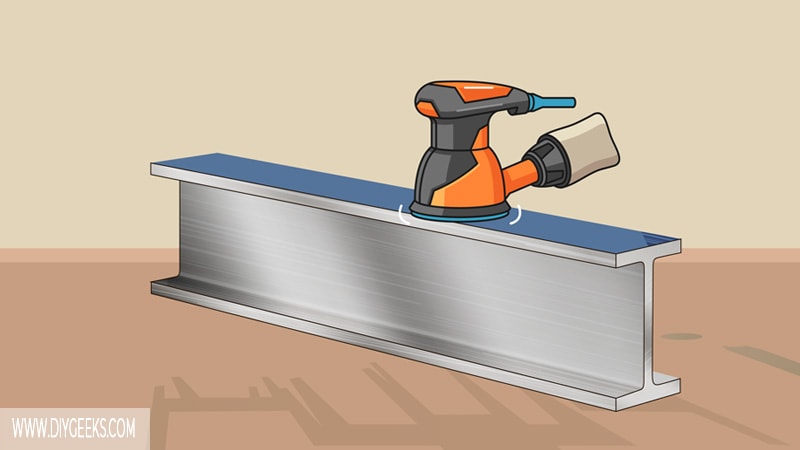
If the metal surface is painted or sealed, remove the existing finish as chalk paint won’t adhere over a paint finish. However, if the metal surface is painted with water-based paint, you don’t need to remove it.
An oil-based paint or sealer will produce a glossy finish over metal and prevent chalk paint from penetrating or adhering to it.
To remove an existing finish from metal surfaces, do the following things.
- Use mineral spirits for oil-based paints or rubbing alcohol for water-based paints.
- Apply the paint remover compound over the painted surface.
- Wait 15-20 minutes.
- Once 20 minutes have passed, the paint will start to bubble and change its form.
- Use a plastic paint scraper to scrape most of the paint.
- Re-apply the paint remover compound to leftover paint.
- Use a rag to remove the paint.
- Remove the paint removing residue from the metal (IMPORTANT!).
- Allow the metal to dry.
- Sand it with ultrafine-grit sandpaper.
Use a plastic paint scraper as a metal paint scraper can damage or scratch the metal. Remove the paint remover residue from the metal as it can discolor it.
Sand the metal surface after removing the existing finish to smoothen its surface and make it ready for paint.
3. Apply Primer
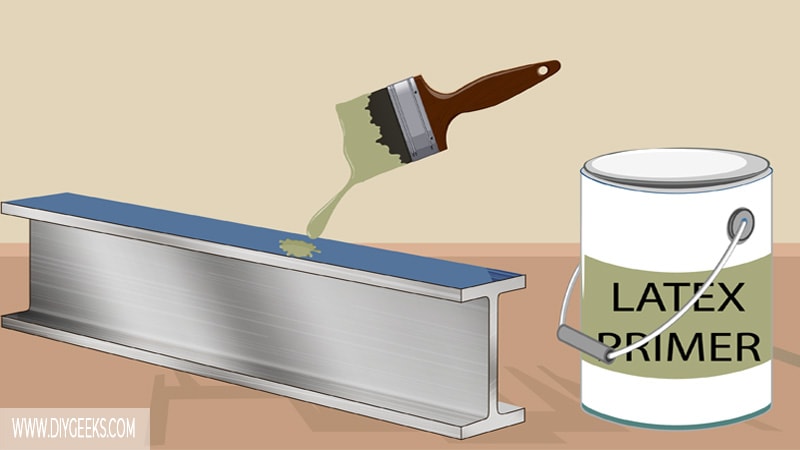
To apply primer do the following things.
- Use a paintbrush, roller, or sprayer.
- You must use a stain-blocking primer to prevent stains or moisture from affecting the finish.
- Apply 2 coats of primer on the metal.
- Wait until the first coat dries before applying the next one.
The purpose of primer is to cover imperfections and provide a smooth layer for the paint to stick to. Primer is formulated with extra additives (binders) that improve its adhesive qualities to stick over non-porous materials, such as metal.
Related Read: Does Chalk Paint Need Primer?
4. Apply Chalk Paint
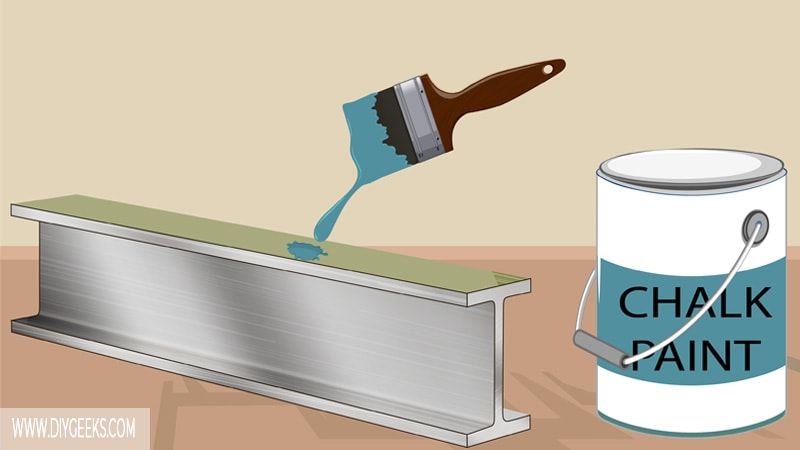
To apply chalk paint, do the following things.
- Use a paintbrush, roller, or sprayer.
- Apply 3 coats of chalk paint to metal.
- Wait until one coat dries before applying the next one.
- Optionally, sand between coats (except for the final one).
- Seal the finish.
5. Seal the Finish
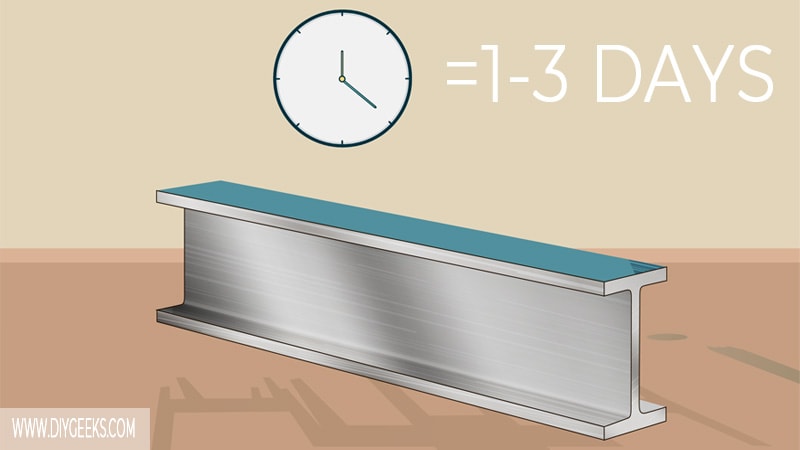
Seal chalk paint on outdoor metal surfaces as the paint isn’t durable enough to withstand outdoor weather elements and will get washed off if exposed to constant water or rainfall.
Chalk paint has a simple formula and doesn’t have protective additives that make its finish moisture-resistant or durable to water, moisture, or scratches.
To seal chalk paint, use wax, lacquer, or polyurethane. The sealer will produce a transparent glossy moisture-resistant layer over the paint and protect it from moisture, water, scratches, and other elements.
You don’t need to seal chalk paint on indoor metal surfaces as the finish isn’t exposed to weather elements, constant water, or elements that can remove it.
Which Types of Metal Can You Apply Chalk Paint on?
Indoor Metal Surfaces
You can apply chalk paint on indoor low-traffic metal surfaces as these surfaces aren’t exposed to constant water, moisture, or handling that can damage the finish.
Chalk paint will last around 3-5 years on low-traffic indoor surfaces, such as decorative vases or picture frames.
You can’t use chalk paint on indoor high-traffic metal surfaces, such as furniture or kitchen cabinets, as these surfaces are exposed to constant water and handling that will remove the paint.
Unsealed chalk paint will last around 1 year on high-traffic indoor surfaces.
Outdoor Metal Surfaces
You shouldn’t apply chalk paint on outdoor metal surfaces unless you seal the paint with a water-resistant sealer. Outdoor metal surfaces are exposed to weather elements and constant water that will remove the chalk paint.
Chalk paint has a simple formula that doesn’t contain protective additives and its finish isn’t glossy. The paint won’t protect the metal surface.
To use chalk paint on outdoor metal surfaces, seal its finish with a water-resistant or waterproof sealer. The sealer will produce a transparent glossy water-resistant layer over the paint and protect it from water, moisture, and scratches.
